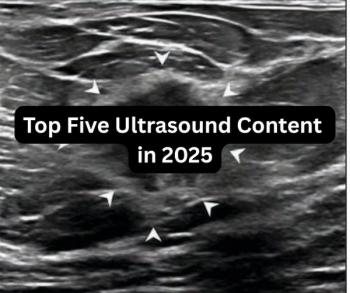
A Closer Look at MRI-Guided Adaptive Radiotherapy for Monitoring and Treating Glioblastomas
In a recent interview, Arjun Sahgal, M.D., discussed current and emerging research examining the potential of MRI-guided adaptive radiotherapy for treating glioblastomas.
While traditional non-adaptive radiotherapy for glioblastomas has reportedly yielded an approximate 11 percent rate of marginal failure, recently presented findings from the UNITED trial revealed that magnetic resonance imaging (MRI)-guided radiation reduced the marginal failure rate to 4.1 percent.
Utilizing the MR-Linac system (Elekta) to facilitate a 5 mm target margin, daily MRI monitoring and weekly changes to a personalized radiotherapy dose plan, the study authors found that 80 percent of patients had a reduction in gross tumor volume (GTV) during treatment.
In a recent interview, Arjun Sahgal, M.D., said the use of the MR-Linac system to facilitate ongoing improvements in targeting with adaptative radiotherapy is a significant advance in the treatment of high-grade gliomas.
“ … You’re constantly evolving to create a personalized radiotherapy field for that patient. … If (the tumor) is getting smaller, you can actually reduce the amount of healthy brain tissue that you radiate. So it’s a whole new paradigm in the approach to glioblastoma that came about as a result of MR-Linac technology,” explained Dr. Sahgal, the chief of radiation oncology at Sunnybrook Odette Cancer Center in Toronto, Canada.
Dr. Sahgal noted that physicians historically obtained MRIs at baseline and three months after radiotherapy treatment for glioblastoma. However, they found in the UNITED trial that over 50 percent of patients with glioblastomas had greater than 5 mm of tumor displacement, on average, during treatment.
“This idea of changing or adapting on a weekly basis to a tumor and adjusting that margin that we take in a personalized way is actually very unique in radiotherapy overall. It has not yet been done in many sites. In fact, we're probably one of the more advanced sites to use the power of adaptive radiotherapy in a clinical trial to date,” noted Dr. Sahgal, the president of the International Stereotactic Radiosurgery Society.
(Editor’s note: For related content, see “
For more insights from Dr. Sahgal, watch the video below.
Newsletter
Stay at the forefront of radiology with the Diagnostic Imaging newsletter, delivering the latest news, clinical insights, and imaging advancements for today’s radiologists.




























